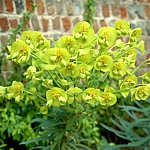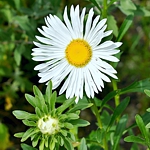The shop is now closed. The listing here is for information only. Please see the Home Page for more information.

Asparagus officinalis



| ||||||||||||
| Garden asparagus | ||||||||||||
|
||||||||||||
| Growing this delicious and exceedingly healthy vegetable from seed might seem a strange idea, since there is a long wait before even crowns can be harvested. Seed-grown asparagus means another year's wait, but the plants will tend to be stronger and healthier than those from bare-rooted crowns that may have been on the garden centre shelves for some considerable time, so failure is less likely. And it's fun to grow your own from scratch! My asparagus bed, which contains plants that have grown from seed deposited in the garden by birds, has received no special care - just an occasional feed and weed - but it is very productive and the crop is delicious! |
||||||||||||
| Sowing and/or growing instructions | ||||||||||||
| Sow half an inch deep in a well-prepared seed bed or an area you have designated as your asparagus bed. Thin seedlings to about 2 inches apart and grow on until they are 6 inches tall, at which point they should be thinned again to about 12 inches apart. Remove any plants that produce berries, as female plants tend no to be as productive as males. Cut stems down to ground level in autumn. Asparagus grown from seed should not be harvested for three years, rather than the usual two from crowns, but you may, like me, not be able to resist taking just one or two stems before then!
A rough guide to harvesting:
Up to end of first year - obviously no cutting! Aim to harvest when the spears are 4-6 inches long, cutting 1-4 inches below the ground, using a long, very sharp, preferably serrated knife (special asparagus knives can be bought for the purpose). Try to keep your cuts localised to prevent damage to the crown. |
















 There are
There are 




